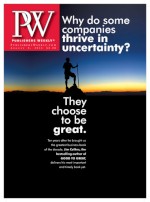In The Children of the Sky, sequel to the Hugo-winning 1992 novel A Fire Upon the Deep, Vinge shows that even advanced far-future humans struggle with social and technical difficulties.
How did you go about planning the evolution of the alien Tines?
The Tines have extraordinary abilities with sound, all the way up to many octaves above human hearing. Such ultrasonics are how they share thoughts between the members of a pack. I imagined them as descended from seal- or whale-like creatures, now returned to dry land. The Tines’ problems in assimilating new pack members are analogous to the various problems we humans have with sex and family issues. Things should become even more complicated once they start using electronic communication to extend the reach of their mindsounds.
Ravna, one of the humans stranded on Tines’ World, often finds herself at odds with the refugee children she saved and mentored. Do you see this sort of generation gap as inevitable?
I think it’s inevitable (and in some sense desirable) that each generation feels the need to shock the previous generation or at least prove itself to the oldsters. However, in The Children of the Sky, the children come from a higher-tech civilization than Ravna does, and now they’re all stuck in a much lower-tech environment. How do you prove yourself in that situation?
You released an electronic edition of A Fire Upon the Deep that included extensive notes. Do you do as much in-progress note-taking as you did 20 years ago?
I have even more in-line notes nowadays. Almost all my low-level analysis, backgrounding, and plotting is done as commentary within the manuscript. I use RCS, a free revision control system, to back up my manuscript after each writing session, so it is easy to see the changes and revisions that happen day by day. The RCS file could be used as the basis for all sorts of interesting graphics. For instance, there could be a video of a color-coded matrix (with, say, one kilobyte of story text per matrix cell) where the colors show the age of the last significant change made to each little part of the novel. With such a video you could see the story grow, but as it did there would be flickering little changes in past writing, and systematic sweeps of color change as I made global revisions and checks. When I get some time, I’m going to look into the best way of making the RCS form of the manuscript public.
Nowadays, most writers use word processors, and although writers have a variety of work styles, I’ll bet that most of us have elaborate machine-readable notes. We’ve lost something as a result: the paper markups of old-time rough drafts. On the other hand, our present situation opens up tremendous possibilities for serious analysis.



 Volume 258
Issue 32
08/08/2011
Volume 258
Issue 32
08/08/2011





